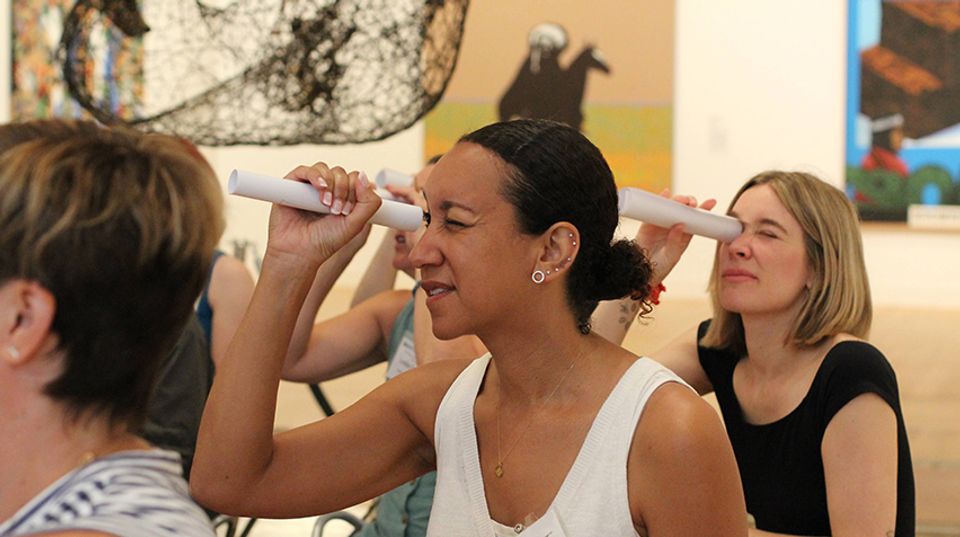

In honor of the current exhibition The Art of Romaine Brooks, eminent scholars Cassandra Langer, Sylvia Kahan, and Helen Langa, joined SAAM's chief curator Virginia Mecklenburg, for a discussion that shed new light onto the artist's life and times. Romaine Brooks emerged as an impressive figure who flouted conventional roles for women and created a unique persona, aesthetic, and body of work.
Cassandra Langer, art historian and author of Romaine Brooks: A Life, was the first speaker on the program. She has devoted the majority of her professional career to discovering and uncovering the artist and asking the question: Who was Romaine Brooks? As a woman artist, lesbian, and longtime partner of American ex-pat Natalie Barney, Brooks flourished in the years between the two world wars. As Langer described, "She stands alongside Virginia Woolf and Gertrude Stein as a major participant in the intellectual and artistic life of her times and beyond." Langer presented a fully realized portrait of the artist, placing her in the context of her times as well as our own.
The second speaker, Sylvia Kahan, professor of music at CUNY College of Staten Island is a pianist as well as a musicologist. She devoted her talk to the vibrant cultural life in Paris that was thriving in Romaine's day, especially the salon hosted by Winnaretta Singer, the Princesse Edmond de Polignac, a musical patron and heir to the Singer sewing machine fortune (and, incidentally, one of twenty-four children sired by Isaac Singer). She was also, briefly Romaine's lover and the subject of a painting by Brooks that is still missing.
The third and final speaker, Helen Langa, associate professor of art history at American University discussed American lesbian artists from 1935-1950, including Gertrude Stein and Alice B. Toklas, as well as less well-known couples on this side of the pond, such as Ellen Day Hale and Gabrielle Devaux Clements, printmakers and life partners. "It was not just in Sapphic Paris that American lesbian artists created successful professional careers," Langa told us. Her talk should be de rigueur for all students of art history and gender studies.
What emerged from the afternoon's presentations was a more complex and spirited portrait of Romaine, as a woman, artist, and lover, fully engaged in life. Though she titled her unpublished memoir, No Pleasant Memories, and often worked in a muted palette of hushed grays, blacks, and white, she wrote in her journal, "A day without laughter was not worth living." Who knew? The discussions also provided insights into gender, queer studies, and lesbian artists and affections in the first half of the twentieth century.
What also emerged was the idea that there are paintings by Brooks that have yet to be discovered. It has long been assumed that Brooks stopped painting for more than thirty years before, at the age of 87, completing one final canvas of her friend Uberto Stozzi, included in the exhibition. New research, however, presented during the discussion revealed that Brooks's letters from those decades included requests for more and more art supplies. If this is the case, then where are the missing paintings (in addition to the portrait of Winnaretta Singer)? It's a mystery that scholars are continuing to unravel.
If you missed the panel discussion watch our webcast:
View an online gallery of Romaine Brooks's work in the exhibition. The Art of Romaine Brooks remains on view through October 2, 2016.

















